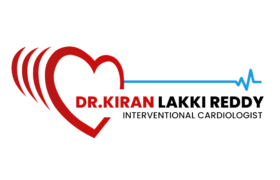Peripheral Artery Interventions


Peripheral artery disease (PAD) is a condition characterized by the narrowing or blockage of the arteries outside the heart, commonly affecting the arteries in the legs and feet. The treatment of PAD aims to relieve symptoms, improve blood flow, and prevent complications. Here are some common treatment options for peripheral artery disease:
- Lifestyle Modifications: Making lifestyle changes can be an essential part of managing PAD. These may include quitting smoking, adopting a healthy diet low in saturated fats and cholesterol, regular exercise, and maintaining a healthy weight. These changes can help improve overall cardiovascular health and alleviate symptoms.
- Medications: Several medications may be prescribed to manage PAD, including:
a. Antiplatelet agents: Medications such as aspirin or clopidogrel may be prescribed to reduce the risk of blood clot formation and improve blood flow.
b. Statins: These drugs help lower cholesterol levels and can slow the progression of artery blockages.
c. Blood pressure medications: Controlling high blood pressure is crucial in managing PAD and reducing the risk of further complications.
d. Symptom-relieving medications: Medications like cilostazol or pentoxifylline may be prescribed to relieve symptoms such as leg pain or claudication. - Endovascular Procedures: Endovascular interventions are minimally invasive procedures performed within the blood vessels to restore blood flow. Some common procedures include:
a. Angioplasty: A catheter with a balloon at its tip is inserted into the blocked artery. The balloon is inflated to widen the artery and improve blood flow. In some cases, a stent may be placed during angioplasty to help keep the artery open.
b. Atherectomy: This procedure involves using a specialized device to remove or shave off the plaque buildup within the artery, restoring blood flow.
The choice of treatment depends on the severity of the condition, the specific location of the arterial blockages, and individual patient factors. A healthcare professional specializing in cardiovascular disease or peripheral artery disease should be consulted to determine the most suitable treatment plan for each individual case.
Fill This Form
Get In Touch
- +91 90149 44654
- lakki.reddy.63@gmail.com
- ONUS Heart Institute, Saroornagar, Malla Reddy Nagar, Saroor Nagar East, Hyderabad, Telangana 500079
Copyright ©2023 All rights Reserved to Drkiran Lakki Reddy ll Develop & Design by Branding Nuts
